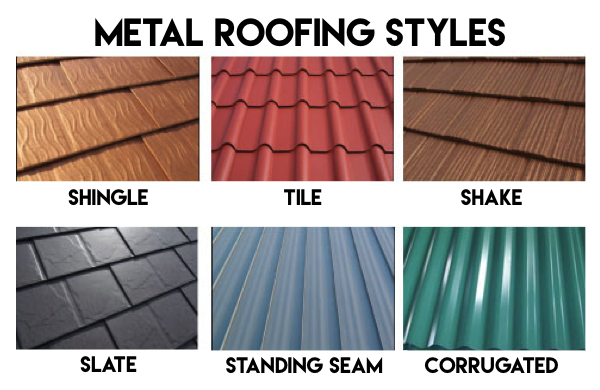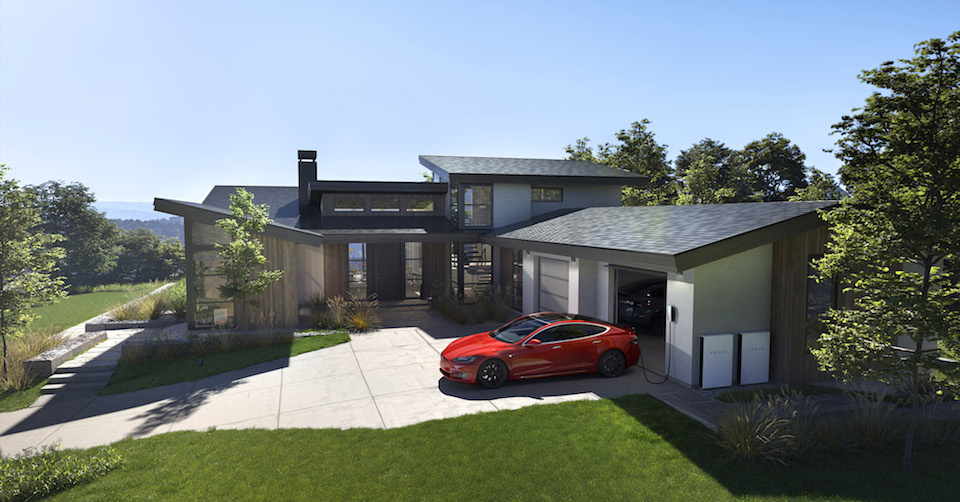It has been a rainy year in Pittsburgh. During a particularly rough storm this spring, we lost a couple shingles off the roof, which we didn’t notice until water started dripping from our living room ceiling. We do not know how old the roof is: it was at least 20 years old, possibly more, when Christian bought the house 10 years ago. There was a pallet of shingles left over from the last time the roof was replaced, which he has been using to repair the roof as needed over the last decade. Unfortunately, we have finally come to the end of those shingles, and it is time to get a new roof.
Getting a new roof is (hopefully) not something you have to think about more than a handful of times in your life, and this is certainly the first time I’ve ever been in this situation. While I’m not thrilled about the expense, I am excited about the prospect of learning about and making an environmentally-responsible choice. Fortunately, Christian has an open mind about considering alternative options, so I set to work with my research.

Asphalt shingles are incredibly common and certainly the most affordable option, but they are not very environmentally friendly. They are oil-intensive and heavy, giving them a high carbon footprint. Although they can be recycled, typically reused as a component in roadway pavement,[1] many people do not, and 11 million tons of shingles go to the landfill every year.[2]
I looked at a variety of alternatives including clay tile, slate, and shake, but metal seemed to come out as the best material (or one of the best) in almost every source I checked. It is durable, long-lasting, can help save on energy costs (since it doesn’t absorb as much heat as a traditional asphalt roof), and can be recycled at the end of its life. Since metal roofs can last twice as long (or more) than asphalt shingles, there is less waste simply by virtue of the fact that there are fewer roof replacements to deal with. The downside is that there is a greater upfront expense.
What I wanted to figure out is how that expense stacked up over the life of the roof, so I set to work doing a Net Present Value calculation between asphalt shingle, metal, and – because why not – the Tesla solar roof. I had not calculated an NPV since grad school, but this certainly seemed like the perfect opportunity to refresh my memory. The idea behind NPV is to create an apples-to-apples comparison of investment alternatives, taking into account expenditures and returns over an extended period of time. In short, metal roofs are more expensive up front, but are they a better choice over 50 years (their stated useful life)?
As with all complex calculations, I had to make some assumptions, most notably about the square footage of our roof, the price of the different alternatives, and potential energy benefits. Granted, I used a metal roofing website for the prices of various materials, so it may be a little biased.[3] For a 1,700 square foot roof, initial cost of asphalt shingles came out to $5,950 on the low end and $15,300 on the high end. Metal ranged from $13,600 to $25,500, and the solar roof came out to $36,700 (pricing from Tesla’s website).[4]

Although asphalt roofs are generally quoted as having a 20-year useful life, I assumed 30 years in my calculations. After all, ours is currently at least that old. The metal roof is rated for 50+ years, but I limited the life to 50, given that I have no first-hand experience with how realistic that number is. The Tesla roof, which is not available quite yet, has a 30-year warranty, so I kept that one at 30 as well.
Metal roofs are supposed to provide an energy benefit in the summer since they don’t absorb heat the way asphalt does. I assumed a 10% reduction on our electricity bill during the three hottest months of the year, which meant $30 in annual avoided costs with a metal roof. The solar roof assumptions included a 50% offset of our electricity bill for 12 months of the year, which came out to $600 in avoided costs every year.
Checking the current interest rate (3%), I set to work. I checked the spending totals at 30 years, the point where only one roof would have been purchased for each material. The 30-year spending totals across the three options were $5,520 – $14,200 for asphalt, $11,780 – $22,820 for metal, and $17,300 for the solar roof.
At the 50 year mark, we would have purchased two asphalt or two Tesla roofs, and be at the end of the metal roof’s life. Here, the spending totals come out to $10,760 – $27,670 for two asphalt roofs, $10,570 – $21,040 for one metal roof, and $38,770 for two solar roofs.

The Tesla option sounded fascinating, and if we didn’t need to replace the roof this year, I might consider it. The first installations are supposed to start this summer, but there were already 11,000 pre-orders as of May last year.[5] That may have to wait for our next roof selection. In the meantime, if we go with metal, it is a great option for homeowners who want to install solar panels. We haven’t discussed that yet, but if we do decide to go down that road, it won’t be happening this year.
There will be more to come as the situation unfolds, but first we need to start getting quotes to see what is realistic for us.
Have you gotten a new roof lately or are you currently in the market for one? Do you have a metal roof or a different non-asphalt alternative? I’d love to hear about your experiences below.
Thanks for reading!
[1] https://earth911.com/recycling-guide/how-to-recycle-shingles/
[2] https://recyclenation.com/2012/12/staggering-impact-roofing-waste-recycling-solution/
[3] https://www.metalroofing.com/residential-metal-roofing/comparing-roof-types/
[4] https://www.tesla.com/solarroof
[5] https://news.energysage.com/should-i-wait-for-tesla-solar-roof/
3 Comments
Charles Korey · June 24, 2019 at 3:12 pm
going asphalt
Alison · June 25, 2019 at 11:22 am
I know. I’m hoping I can talk your son into metal.
“My Cabin Doesn’t Leak When it Doesn’t Rain,” Part 1 – Radical Moderate · January 10, 2021 at 10:02 am
[…] [1] https://radicalmoderate.online/sustainable-roofing-materials/ […]